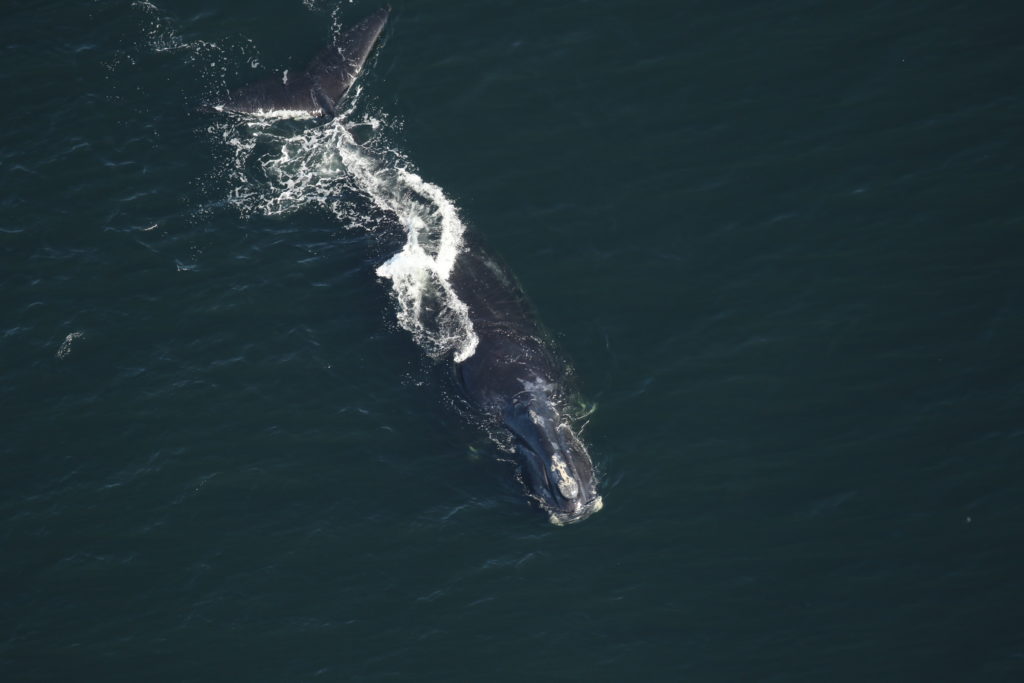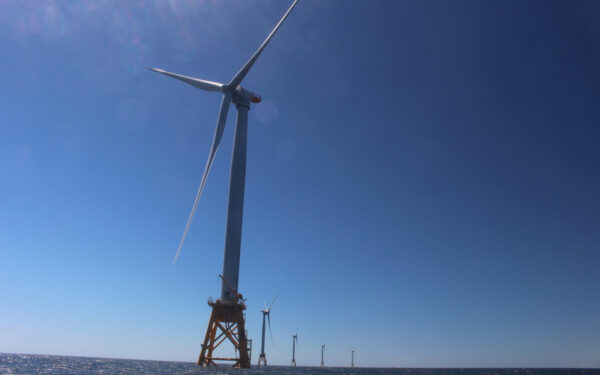
It's critical that offshore wind develops without harming the endangered North Atlantic right whale. Photo: Florida Fish and Wildlife Conservation Commission
With sea levels and temperatures rising, it is critical that we develop New England’s vast renewable wind energy resources to reduce our use of fossil fuels. Harnessing offshore wind will help the region transition away from dirty polluting fuels to a clean energy economy that safeguards us from the impacts of climate change.
But even as new offshore wind projects move forward off of New England’s coast, we must make sure that this exciting new clean energy resource is developed in a way that maintains a healthy ocean – including safeguarding our iconic and severely endangered North Atlantic right whales.
We know that some right whales migrate annually from Florida waters to Canada’s Gulf of St. Lawrence, traveling through busy coastal waters proposed for offshore wind development. We also know that right whales are found in the U.S. offshore wind lease areas year-round.
That’s why CLF and our partners have developed a set of best practices to guide the development of offshore wind energy in the lease areas off the Atlantic coast. For right whales to survive, these best practices are crucial for developers to follow. They balance necessary protections for wildlife with the imperative for renewable energy.
1. Choose the right location
New offshore wind projects shouldn’t be built in right whale critical habitat, which is designated under the Endangered Species Act, until scientific studies show that these facilities will not jeopardize right whales or negatively impact their habitat. Research should also inform the development of comprehensive mitigation measures to avoid harming right whales or their habitat. In addition, developers should take into account whales’ foraging, calving, and migratory routes when deciding where to construct a facility.
2. Restrict construction time
Even before construction begins, the surveying technology developers use to make final decisions about turbine installation can be loud enough to harm whales, including by affecting their feeding, breeding, and migratory habits. After the surveying ends, pile driving – when holes are bored into the ocean floor to hold the turbine bases – begins. Neither activity should happen during high-risk times for whales, whether it’s their calving season in Florida waters or when they are migrating and feeding in New England waters. Both surveying and pile driving should only happen during daylight hours and with good visibility so that developers can stop the activity immediately if a whale is spotted.
3. Monitor for whales
To make sure that construction doesn’t happen when whales are in the area, developers need to monitor for them in the first place. There should be, at minimum, observers approved by the federal government’s Protected Species Observers program. Underwater acoustic monitoring devices, which can detect whale sounds, and aerial surveys should also be used.
4. Set speed limits
All ships going to and from the wind farm during construction and operation should not go faster than 10 knots during times of the year when right whales are most likely to be or actually are present. Under specific scenarios, ships can go faster, but the baseline should be 10 knots or less.
5. Reduce underwater noise
Construction will cause increased ocean noise, which can interfere with whales’ ability to navigate and communicate. Developers should use the best materials, installation methods, and technology available to reduce such disruptive underwater noise.
6. Commit to scientific research and long-term monitoring
Because they’ll be out on the water, developers have an exciting opportunity to be a part of scientific research and monitoring of right whales. Because this is a new industry, it is important to study what effect wind farms are having on marine life — and how the two can better coexist. Developers should coordinate with marine experts and make their findings public.
7. Contribute to conservation
Finally, developers should commit to protecting right whales more broadly than just making sure that their own projects don’t harm them. Developers can support other conservation efforts including, for example, efforts to reduce unintentional entanglement in fishing gear, one of the biggest threats to right whales.
It’s an exciting time for offshore wind in New England, with multiple projects moving forward over the next decade. In order to meet our carbon reduction goals, there will likely be more to come. By following these best practices, developers can move the clean energy industry forward while protecting North Atlantic right whales and other marine life in the ocean.




